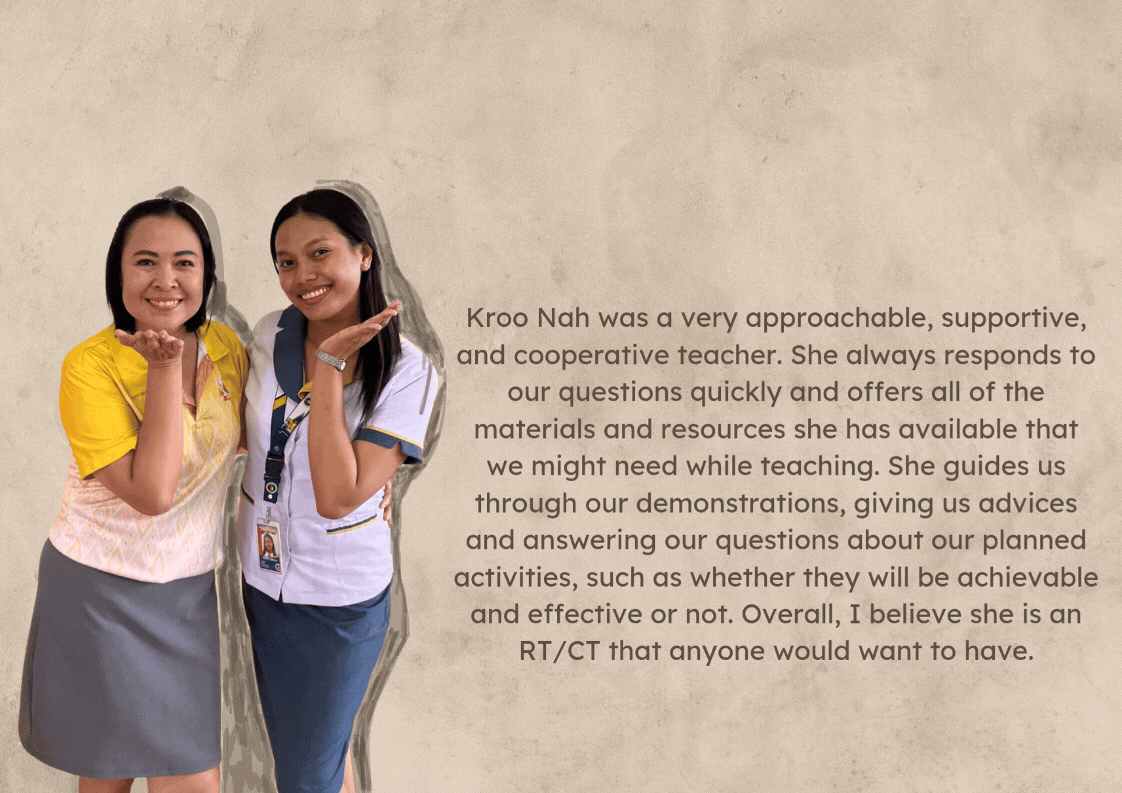
Pedagogical Contents
As a bit of a context..
We arrived in Thailand a week later than the other exchange students from Indonesia and SMU Philippines.
The week we arrived, they had already completed the observation and were about to begin the assistantship. However, being late to start does not prevent me from carefully observing how they teach English using their unique curriculum. Before I begin sharing on this page, let me introduce you to Kroo Nah.

Going back, as I observed Kroo nah, I was able to see the method she uses to teach her students. She not only presents the words and vocabulary that need to be learned on that particular day, but she also employs 'memorization' as a strategy. As I observed the students, I believe that this memorization strategy is both necessary and effective, given that they are new to the English language. They only know a few English words and must begin with the basics—memorization and linking to their native language 1, as is typical when toddlers first learn English from their mother tongue.
Kroo nah allowed the students to memorize not only the words she taught, but also phrases for how to use those words in everyday life. Given their age and level of English proficiency, it is understandable and necessary. In order to achieve learning, I observed how my RT/CT uses not only television and laptops, but also teacher-designed materials such as the one shown in the video above, a large die with questions on it, and when they flip it, they must respond using a phrase they have also memorized.
Kroo Nah's teaching materials reflect her creativity, as do the visual aids posted on the classroom walls. The classroom may appear to be full of visuals, but it never felt overwhelming to me. Perhaps because all of the materials are sufficient and useful for learners to gain access to learning even when they do not have direct contact with the teacher. The visuals help them remember all of the topics covered and become more familiar with the words and vocabulary they have learned.
.png)
Not only do visual aids help students learn, but so do printed materials and flashcards that are properly stored in the classroom. It is used not only during class hours when the teacher is teaching, but it is also accessible at any time. Textbooks can also help students learn. The teacher allows them to read books in order to improve their reading skills and learn new vocabulary words.
When it comes to assessing their knowledge after the lesson, the teacher uses games to keep them engaged while also determining whether or not they learned. It is her method of making the class more interactive while still achieving the desired outcome. In this way, it has been observed how students willingly participate and how the teacher can accurately assess their learning. The teacher also uses worksheets to provide a more reliable assessment of the student's learning. Individual learning and knowledge of the topic covered can then be measured.



